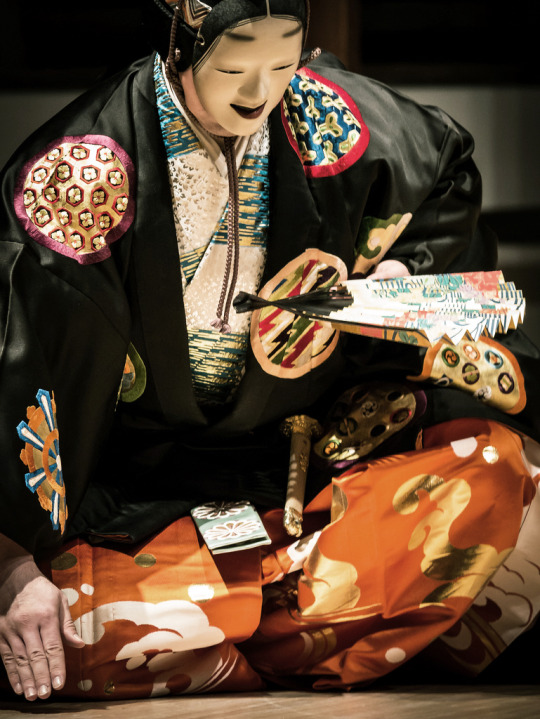Text

'newly cut californian abalone mabé pearls display a variety of shapes' in pearls: a natural history - american museum of natural history + the field museum (2001)
6K notes
·
View notes
Text
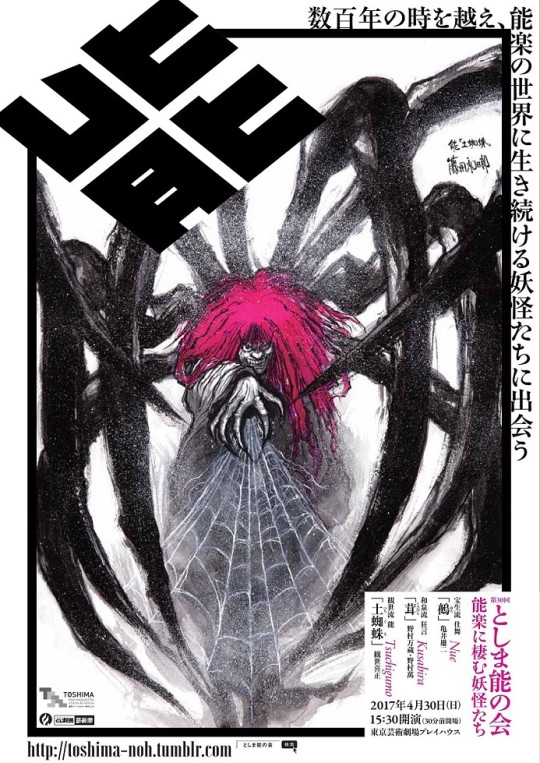
Flyer for the 30th Toshima Noh Performance. Theme: Yōkai. Illustration for the play "Tsuchigumo" by Kazuhiro Fujita.
0 notes
Photo

Demon Wars: Shield of Justice #1 - “Into the Spirit World II” (2022)
by Peach Momoko
45 notes
·
View notes
Text
For #FrockFriday, this was definitely one of the highlights of the #KimonoStyle exhibition at The Met:

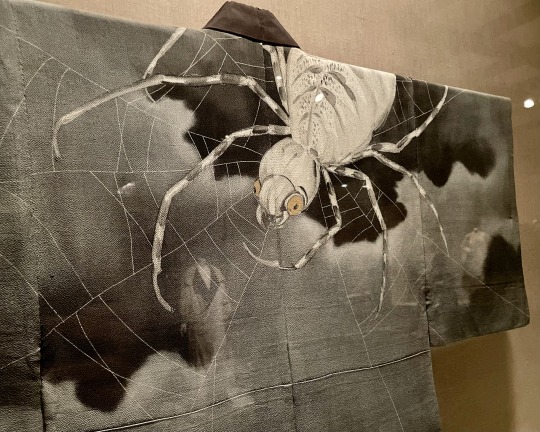
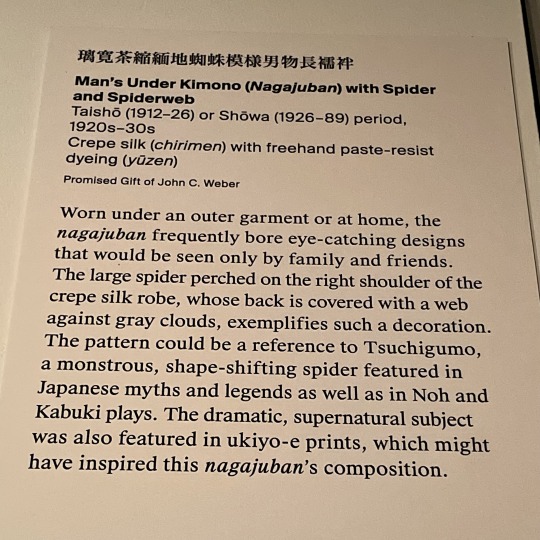
Man's Under Kimono (Nagajuban) with Spider and Spiderweb Taisho (1912-26) or Showa (1926-89) period, 1920s-30s Crepe silk (chirimen) with freehand paste-resist dyeing (yüzen) The Metropolitan Museum of Art, New York
"Worn under an outer garment or at home, the nagajuban frequently bore eye-catching designs that would be seen only by family and friends. The large spider perched on the right shoulder of the crepe silk robe, whose back is covered with a web against gray clouds, exemplifies such a decoration. The pattern could be a reference to Tsuchigumo [Yōkai], a monstrous, shape-shifting spider featured in Japanese myths and legends as well as in Noh and Kabuki plays. The dramatic, supernatural subject was also featured in ukiyo-e prints, which might have inspired this nagajuban's composition."
211 notes
·
View notes
Text
This just occurred to me. Continuation to the "Five Yōkai references to Studio Ghibli films".
Comparing Tatarigami to Tsuchigumo. Tatarigami (タタリ神 i.e., "cursed god") is the giant creature from Princess Mononoke that attacks the Emishi village and curses its last prince, Ashitaka. Behind the shape, resembling a giant spider covered in worms, hides the colossal boar god Nago. Tsuchigumo (土蜘蛛 literally "dirt/earth spider") is a historical Japanese derogatory term for renegade local clans and also the name for a race of spider-like yōkai in Japanese folklore.
Now, to how they are related: The aboriginal Emishi tribe that Ashitaka comes from is one of these renegade clans that have been fighting for 500 years against Yamato (the emperor). They have been losing against him, and now, with their last prince being cursed to death, they are certain to die out. From the Japanese middle ages onwards, these rebelling clans, i.e., Tsuchigumo, have been depicted as giant, monstrous spiders. In "The Tale of the Heike", the samurai Minamoto no Yorimitsu (a member of one of the ruling clans) defeats an enormous spider yōkai referred to as a Tsuchigumo (probably a metaphor for an opposing clan).
Now, going back to Princess Mononoke: Ashitaka, trying to protect his people, also kills this giant spider-looking god. But before doing so, he is cursed by the god. Because of this curse, he must leave his tribe and never come back. In a way, Ashitaka too has killed this renegade clan (Tsuchigumo), i.e., his own people.
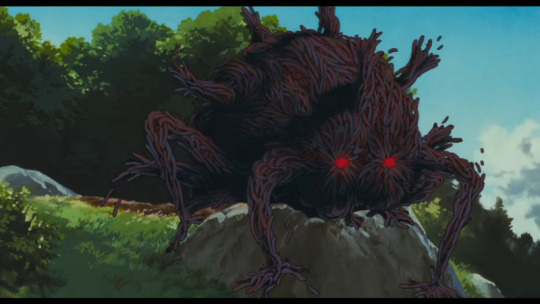
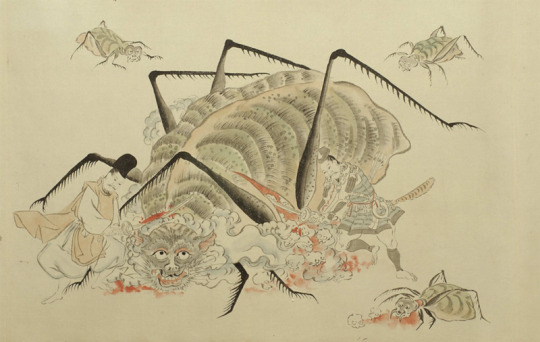
51 notes
·
View notes
Text
当日券について
「第33回 としま能の会」当日券の販売はございません。
沢山のご予約ありがとうございました。皆さまのご来場、心よりお待ちしております。
チケットをご購入いただいていないお客様は、当日ホールにお越しになられてもお買い求めいただけませんので、あらかじめご了承ください。
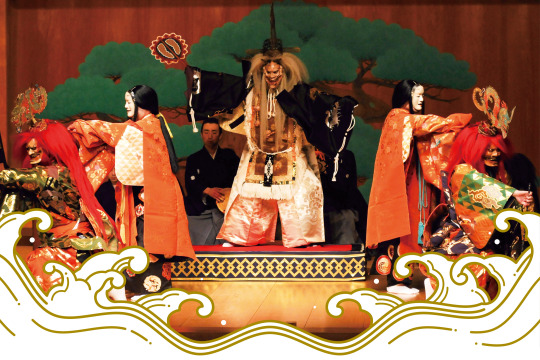
2 notes
·
View notes
Text
I haven’t seen this little guy posted yet today for #LunarNewYear #YearOfTheSnake 🌕🐍 so I guess I’ll be the one to do it…


Snake (Naga) Figure
U Thong District, Suphan Buri Province, Thailand, 6th - 11th c. CE
Baked clay with incised details
National Museum Bangkok
12K notes
·
View notes
Text
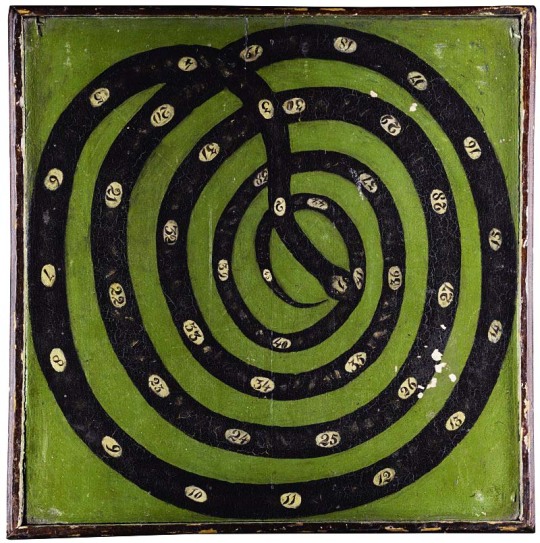
Very rare green and black painted wooden double-sided numerical snake motif gameboard. New England, Mid-19th Century. 12.5 x 12.5 in.
6K notes
·
View notes
Text
Noh Mai Evangelion
In 2006, as part of the « EVA AT WORK » campaign in celebration of the anime's 10 year anniversary, Neon Genesis Evangelion was adapted into a Noh Mai, a form of traditional Japanese dance.

Commissioned by Gainax, Noh performer Tsunao Yamai of the Komparu school chose for the adaptation to center the theme of maternal love after being inspired by a scene where the EVA goes berzerk :
The main character of the anime is a boy who pilots an Evangelion (Eva) and fights against unidentified enemies called angels. In the middle of the story, the Eva loses power and the main character is in danger, but there is a scene where the Eva suddenly awakens, turns into a beast, and defeats the angels. When I saw that, I thought that it was motherhood. In fact, the main character's mother is absorbed into the Eva. Noh also has the theme of motherhood. -Tsunao Yamai. Kissport.or.jp (via Google translate)
Noh theatre indeed features a number of stories about mothers going on a long journey to look for their kidnapped child such as Sakuragawa, Sumidagawa, or Hyakuman.

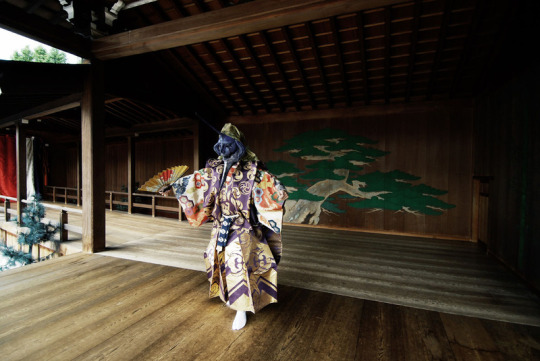
Rather than a full play, the Noh Mai Evangelion performance seems to have been a 20 minute-or-so Mai (舞), a dance section that involves slow graceful motions with feet sliding along the ground rather than jumping in rhythm and bouncy movements.
On stage, the shite (lead role) wore an appropriatedly-colored purple happi evoking the figure of a warrior in armour over a costume with tortoise shell patterns symbolising longevity, which reminds me of Yui Ikari’s wish to be the eternal memento of mankind’s existence : « Humans can only exist on this earth, but the Evangelion can live forever… along with the human soul that dwells within. » In order to reflect Shinji Ikari’s « pessimistic psychological state », a make-shura fan was used, adorned with roaring waves in front of a setting sun symbolising the losing side of the Genpei war.
Mr. Tsunao Yamai decided not to write new songs for this adaptation, instead choosing adequate scenes among the 170 songs of Komparu’s repertoire, such as Kurozuka, Kiyotsune, Atsumori, Hyakuman, and Koi no Omoni (The Deadweight of Love). Here are a couple of lyrics of the plays in question that seemed appropriate, though I don't know if they were used :
"There is nothing sadder than one who has a desolate life. I am so weary of such a bitter life. I’ve had far too much of it. Autumn has come. The autumn wind at dawn pierces me and never eases my grief. Yesterday too ended in emptiness, and I feel the energy of life only when I doze in the night. How ephemeral my life is!"
-Kurozuka / Adachigaraha.
"The time has come. Your Grace, I will become your guardian spirit and protect your prosperity for good."
-Koi no Omoni (The Deadweight of Love.)
Although the video footage of the performance was only released for a limited time, some old articles can give us an idea of its structure:
When the curtain at the end of the bridge opens, a strange figure wearing a purple mask and purple clothing appears. Wearing an original Noh mask modeled after the robot "Evangelion Unit-01" that Shinji pilots, the performer (shite) slowly walks onto the stage. A quiet dance unfolds to the accompaniment of the jiutai for a while, but then the mouth of the mask splits and the dance becomes violent, expressing an uncontrollable "out-of-control" state. -Theatreguide.co.jp, 2006. (via Google translate)
In order to reflect the berserk state, the articulated jaw of the Unit-01 noh mask made by Shohey Yamashita splits opens. According to this source, for the Eva fighting scene was used a scene from Atsumori, a play of the warrior-hell category whose protagonist is sixteen-year-old.
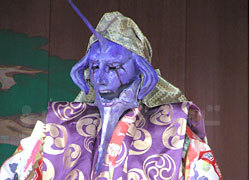
After defeating the enemy, the robot takes off its top mask and reveals underneath a young woman's face (ko-omote mask). Removing the purple happi to don a white costume, Unit 01 transforms into Shinji's mother, Yui Ikari, whose soul was absorbed into the EVA.
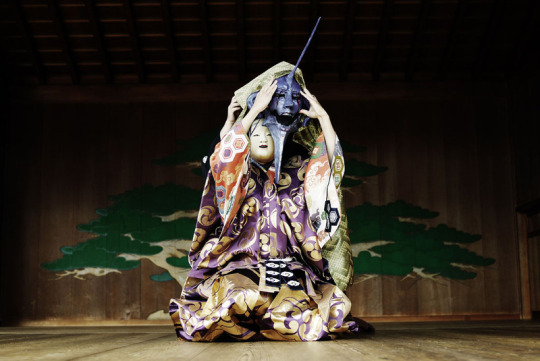
I wonder what Hideaki Anno thought of this adaptation. He might be familiar with Nohgaku, since his movie "Shin Godzilla" stars well-known Kyōgen actor Mansai Nomura in the role of Godzilla, who in the original movie moved by sliding feet (suri ashi), like in Noh and Kyogen.
It’s interesting to see how an anime that takes place in a future with advanced militaristic giant robot technology was adapted to fit a form of theatre that was created in medieval Japan hundreds of years ago. Although I didn’t have a chance to see it, I think that it's interesting that despite Evangelion complex’s lore, the creators of this project were able to take a part of the original story, Yui Ikari as Unit-01, that isn't very developed and that suited one of Noh's themes as well as masked theatre.
Article sources: (1) (2) (3) (4) (5) (6) (7)
1 note
·
View note
Text

Coexistence of Noh and urban space in this open-air dance of the celestial maiden in "Hagoromo", in Hibiya.
1 note
·
View note
Text

Flyer for Tsuna 「綱」, a Noh play restored in the Reiwa era (2019 - ).
Sequel to the Noh play Rashōmon, it is based on a story from the Sword Scroll of the Tale of the Heike in which military commander Watanabe no Tsuna cuts of the arm of a demon, who takes it back by assuming the form of his aunt.
#Watanabe no Tsuna#Rashomon#Noh#能#能楽#heike monogatari#the tale of the heike#revived Noh#flyer design
2 notes
·
View notes
Text
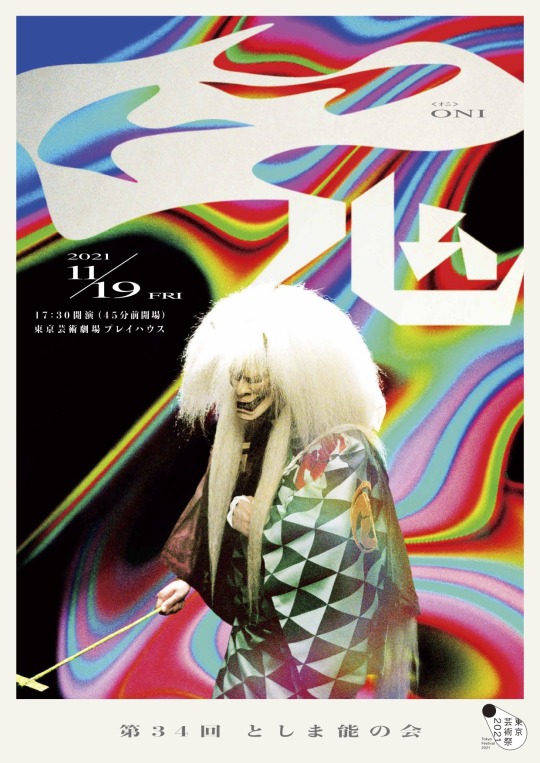
Visual for the 34th Toshima Noh Performance. Theme : oni.
13 notes
·
View notes
Text
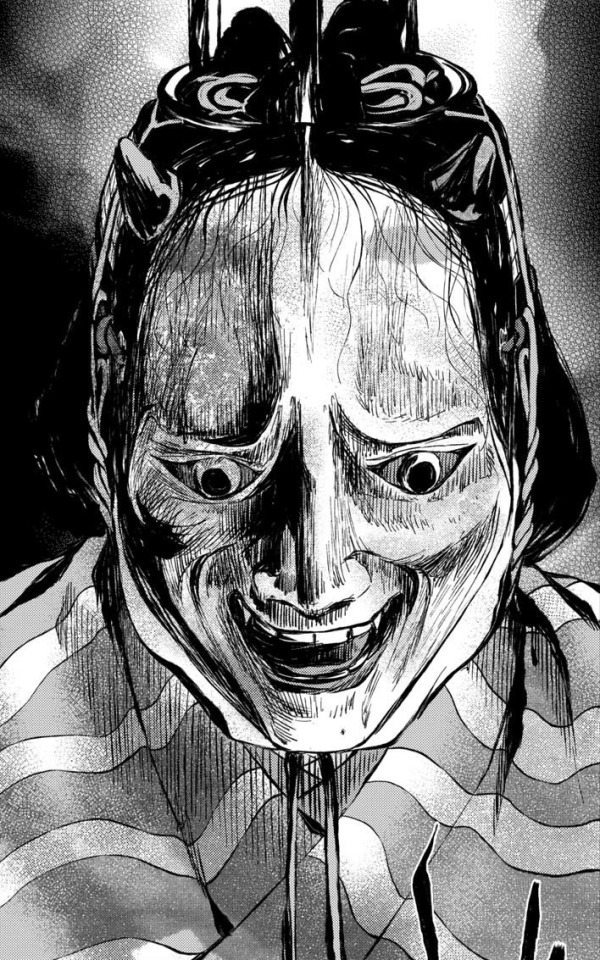
Namanari mask in the manga Shite no Hana, worn during a performance of Kanawa (Iron Trivet).
1 note
·
View note
Photo
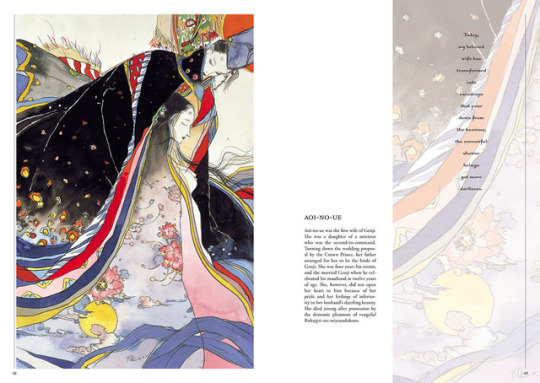
Today, my beloved wife has transformed into raindrops that pour down from the heavens; the sorrowful shower brings yet more darkness.
Aoi-no-ue
Amano Yoshitaka / The Tale of Genji
Text by Anri Ito and Junichi Imura Additional English translation by Rachel Nacht
49 notes
·
View notes

